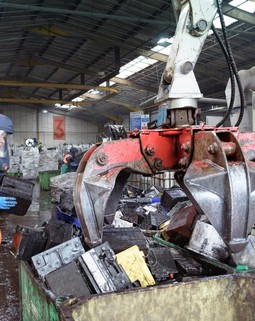China, a dominant player in the global graphite market, has recently implemented restrictions on graphite exports, raising concerns in industries reliant on this critical mineral. The move comes amid heightened demand for graphite, particularly from the electric vehicle (EV) sector, as countries like the United States push for accelerated adoption of electric vehicles to combat climate change. In this article, we explore the implications of China's export restrictions on graphite and their potential impact on the EV supply chain and beyond.
Introduction: China's Dominance in the Graphite Market
China holds a commanding position in the global graphite market, accounting for a significant portion of both production and exports. Graphite, a crucial component in lithium-ion batteries used in electric vehicles, electronics, and industrial applications, plays a vital role in the transition towards cleaner and more sustainable technologies.
However, China's recent decision to restrict graphite exports has raised concerns about supply chain disruptions and potential shortages in key industries.
Background: Rising Demand for Graphite in Electric Vehicles
The surge in demand for graphite can be attributed to the rapid growth of the electric vehicle market, driven by efforts to reduce greenhouse gas emissions and mitigate the impacts of climate change. Graphite is a critical component of lithium-ion batteries, which power electric vehicles and store energy for renewable energy systems.
As countries around the world ramp up their efforts to electrify transportation and decarbonize their economies, the demand for graphite is expected to continue growing.
China's Export Restrictions: Causes and Consequences
China's decision to restrict graphite exports is motivated by various factors, including domestic demand, environmental concerns, and strategic considerations. By limiting exports of graphite, China aims to ensure a stable supply of this critical mineral for domestic industries, support its transition to a low-carbon economy, and maintain its position as a global leader in advanced manufacturing and technology.
However, these export restrictions have significant implications for industries reliant on graphite imports, particularly the electric vehicle sector.
Impact on the Electric Vehicle Supply Chain
The electric vehicle supply chain is highly dependent on graphite, as it is an essential component of lithium-ion batteries, which power electric vehicles. With China imposing restrictions on graphite exports, automakers and battery manufacturers may face challenges sourcing an adequate supply of this critical mineral.
This could lead to supply chain disruptions, production delays, and increased costs for electric vehicle manufacturers, potentially slowing down the pace of electrification and hindering the transition to sustainable transportation.
Diversification and Resilience: Strategies for Mitigating Risks
To mitigate the risks posed by China's export restrictions on graphite, industry stakeholders are exploring strategies to diversify supply sources, reduce dependence on Chinese imports, and invest in alternative technologies and materials. This includes developing domestic graphite resources, exploring recycling and reuse options for lithium-ion batteries, and fostering international cooperation to address supply chain vulnerabilities.
By diversifying and strengthening the resilience of the electric vehicle supply chain, stakeholders can mitigate the impact of China's export restrictions and ensure continued growth and innovation in the electric vehicle market.
Policy Responses and International Cooperation
Addressing the challenges posed by China's export restrictions on graphite requires coordinated policy responses and international cooperation. Governments, industry associations, and multilateral organizations must work together to promote transparency, fairness, and sustainability in global mineral supply chains, while also fostering innovation and investment in alternative materials and technologies.
By adopting a collaborative approach, stakeholders can minimize disruptions, enhance supply chain resilience, and accelerate the transition towards a cleaner, more sustainable energy future.
Conclusion: Navigating Challenges in the Graphite Market
In conclusion, China's export restrictions on graphite present significant challenges for industries reliant on this critical mineral, particularly the electric vehicle sector. As demand for graphite continues to rise, stakeholders must work together to diversify supply sources, enhance supply chain resilience, and promote sustainable practices in mineral extraction and processing.
By addressing these challenges through innovation, collaboration, and responsible stewardship of mineral resources, stakeholders can ensure the continued growth and success of industries dependent on graphite while advancing the transition towards a more sustainable energy future.





